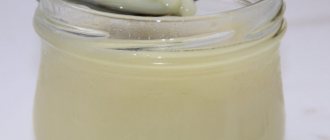Many people underestimate herbal treatment, considering plant components to be ineffective against diseases. However, an unsuccessful combination of St. John's wort with synthetic drugs or other herbal preparations can lead to serious negative reactions, worsening the patient's condition. When used judiciously, St. John's wort has a therapeutic effect on the functioning of the biliary tract, alleviates the patient's condition with gastritis, and can promote recovery from liver diseases.
What does St. John's wort treat?
The two main areas of use of St. John's wort are diseases of the digestive system and skin wounds. Systemic use of decoctions and tinctures can act as an antispasmodic for pain in the intestines, bile ducts and vasoconstriction. In addition, the herb stimulates blood circulation and reduces the level of inflammation of the mucous membranes of the gastrointestinal tract. St. John's wort is active against bacteria - it prevents them from multiplying, nullifying the course of the disease.
The use of St. John's wort has a positive effect with early initiation of treatment for flatulence, as well as with exacerbation of chronic colitis, intestinal disorders, and diagnosed biliary dyskinesia.
In relation to the treatment of urolithiasis, St. John's wort is effective as a diuretic. Due to its diuretic properties, it increases the volume of urine produced, thereby helping to remove small stones from the body.
St. John's wort tincture can be used for helminthic infestations - enterobiasis. And medications using plant extract are prescribed to patients with weak capillary walls, as well as with impaired peripheral circulation.
Use in folk medicine
Due to its rich ingredient composition, St. John's wort is very popular in folk medicine (along with chamomile). It is added to almost all herbal complexes, mixtures, and face masks.
Plant forms of the plant used in folk medicine.
Fresh leaves, shoots and inflorescences
The crushed raw materials are used as a bactericidal agent for healing wounds, bruises, burns and abrasions. In addition, medicinal mixtures are prepared based on St. John's wort to eliminate allergic rashes and itching from insect bites.
Oil
Fill a half-liter container with St. John's wort flowers (700 g). Pour unrefined vegetable oil (peach, almond, olive) over the grass. “Squeeze” the flowers tightly (so that they are covered with liquid), seal the jar with a lid, and move the container to a dark place for 30 days. After infusion is complete, strain the mixture and pour into an opaque bottle. St. John's wort oil is used to “fight” boils, herpes, trophic ulcers, hemorrhoids, mastopathy, periodontal disease, and rosacea.
Infusion
To prepare the drug you will need 50 g of St. John's wort (dry) and 200 ml of boiling water. The ingredients are mixed and then infused for 3 hours in a thermos. The therapeutic mixture is taken three times a day, 50 ml. The composition is effective in the complex therapy of gastritis, cystitis, colitis, hypotension, headaches, cholelithiasis. In addition, the infusion is suitable for rinsing the mouth (for gingivitis, stomatitis, colds) and treating inflammatory processes on the skin (in the form of lotions).
Decoction
Dry St. John's wort stems (25 g) are poured with water (250 ml), and then boiled for 15 minutes over low heat. The product is used both internally (for the treatment of intestinal infections and diarrhea) and externally (for washing and rinsing hair).
Alcohol tincture
The composition is prepared from St. John's wort and vodka (in a ratio of 1:7). If desired, you can use medical alcohol (in a ratio of 1:10). After mixing, the mixture is infused in a dark place for 5-6 days. After the specified time, boiled water is added to the herbal solution (in a ratio of 1:5). The drug is used as a warming compress for joint and muscle pain.
Tea
Pour 7 g of St. John's wort herb into the teapot. If desired, you can add strawberries and linden blossom. Pour boiling liquid over the raw material, and then leave for 7-10 minutes under a closed lid. Tea is consumed to strengthen the immune system and relieve nervous tension (together with honey or cranberry jam).
St. John's wort oil
This is an excellent antiseptic, which is recommended to lubricate burns (even extensive ones), wounds, abrasions, contusions and bruises to disinfect and accelerate tissue regeneration.
Other uses of St. John's wort oil:
- Prevention of influenza and respiratory infections. To prevent colds (especially during periods of vitamin deficiency), St. John's wort oil is instilled into the nasal sinuses (2 drops three times a day). When rhinitis appears, the frequency of irrigation is increased to 7-9 times a day (every 90 minutes). Along with this, it is advisable to take St. John's wort oil orally (5 ml each).
- Diseases of the digestive tract (ulcers, gastritis, enterocolitis, duodenitis, irritable bowel syndrome). To regenerate the mucous membranes, St. John's wort concentrate is taken 15 ml twice a day (50 minutes before meals). The course of treatment with oil is 21 days. After 10 days, the therapy is repeated.
- Inflammation of the skin (abscesses, boils, burns). St. John's wort oil is applied to the cleansed damaged dermis for 20 minutes (in the form of applications and medicinal dressings). With daily treatment of the skin, the regeneration of epithelial tissue accelerates (including the healing of purulent scars). Along with this, the oil mixture is used for mastitis, bruising, muscle strains, cracked nipples (in nursing mothers).
- Vitiligo. To reduce foci of depigmentation, St. John's wort is used both internally (in the form of an oil infusion) and externally (as part of applications). The concentrate is consumed 10 ml three times a day (preferably 3 weeks). After 7 days, the treatment is repeated. To obtain a pharmacological effect, it is important to carry out 8 cycles of therapy (with weekly breaks).
During oral administration, the affected skin is lubricated with St. John's wort oil (by applying a napkin soaked in the healing mixture for 40 minutes). The course of therapeutic wraps is 40 days.
- Stomatitis, periodontal disease, gingivitis. For inflammation of the oral cavity, St. John's wort “poultices” are used. To do this, a cotton swab in a herbal decoction is applied to the damaged areas of the gums for 20 minutes.
- Haemorrhoids. To reduce pain, a composition is prepared from St. John's wort oil (15 ml) and chamomile ether (15 ml). Then the mixture is combined with 100 ml of boiled water and injected into the anus from a microenema. After this, turn over on your side or stomach for 5 minutes.
To enhance the antiseptic effect, St. John's wort oil can be combined with other bactericidal plants (celandine, chamomile, calendula).
Is it worth taking St. John's wort for vitiligo?
Studies of the plant have shown that St. John's wort has photosensitizing properties. Together with hypericin, these properties have shown to be effective in the treatment of vitiligo. This disease develops against the background of autoimmune processes and stress, as a result of diseases of the internal organs, due to which the level of melanin in the skin, which is responsible for the color of the epidermis, is significantly reduced. The use of St. John's wort helps restore immunity by improving the functioning of the digestive system and reducing the level of free radicals.
In addition, if St. John's wort juice is applied to areas of skin with a deficiency of pigment, and the treated areas are exposed to direct sunlight, then there is a high probability of accumulation of melanin in skin cells, which can reduce the severity of uneven color.
Compound
The beneficial properties of St. John's wort are due to its chemical composition:
flavone compounds (quercetin, rutin, etc.) have an antioxidant and rejuvenating effect;- vitamins: nicotinic and ascorbic acid, necessary for the normal functioning of the heart, nervous and immune systems. Vitamin C protects against malignant cell degeneration;
- saponins – enhance the secretion of glands, have a diuretic and hypocholesterolemic effect. Work as adaptogens;
- tocopherols (vitamin E) – protect against free radicals;
- carotene – ensures proper functioning of the visual organs, regeneration of skin cells, protection against viruses and bacteria;
- rutin – strengthens vascular walls;
- choline – has membrane protective and antiatherosclerotic effects;
- hyperforin and hypericin are substances that have an antidepressant effect.
- phytoncides with pronounced antimicrobial and antiviral effects;
- tannins - cleanse wounds of infectious contents, relieve inflammation, promote regeneration.
The plant also contains essential oil, resinous substances and bitterness.
How to take St. John's wort for depression
St. John's wort has the ability to regenerate cells of the nervous system, which improves sleep, relieves anxiety and eliminates constant psychological discomfort.
St. John's wort as a remedy for depression is taken as part of an herbal mixture, a tablespoon of which is steamed in 200 ml of hot water. The resulting drink is drunk half an hour before bedtime. The duration of therapy is from 1 month, in accordance with the doctor’s recommendations. This decoction is useful not only for depressive disorders, but also for mental stress.
Contraindications
St. John's wort, like any medicinal plant, has a number of strict contraindications.
Medicinal herbs should not be combined with:
- antibiotics (to avoid vision deterioration);
- contraceptives (St. John's wort reduces the effectiveness of contraceptives);
- antidepressants;
- drugs that suppress the immune system during organ transplantation;
- antiepileptic drugs;
- cardiac glycosides.
In addition, St. John's wort should not be taken:
- children under 6 years old;
- pregnant women (nursing);
- people diagnosed with schizophrenia or Alzheimer's disease;
- alcoholics;
- cancer patients (especially with estrogen-dependent tumors).
St. John's wort is generally well tolerated, but in 20% of cases it can cause an allergic reaction (from an itchy rash to anaphylactic shock).
Common side effects: dizziness, dry mouth, digestive disorders, urticaria, Quincke's edema. If these symptoms appear, stop taking the plant immediately (since each subsequent dose of the drug is fraught with a more severe allergy). In addition, St. John's wort is prescribed with caution to men, since the herb can cause temporary impotence.
How to distinguish medicinal St. John's wort from other varieties
St. John's wort is a perennial plant. Botany knows more than 450 of its species. St. John's wort is widespread throughout our country. Refers to herbs. Its height varies from 30 cm to 1 meter. The root system is superficial. The stem of the medicinal plant is dihedral, which diverges into many branches closer to the top. The leaves are arranged oppositely, they are smooth, oval, and may be slightly elongated. The name of this type of St. John's wort appeared precisely because of the appearance of the leaves - they are covered with small, almost transparent spots, called holes. Its flowers are bright yellow and appear in the summer months. In autumn, the buds ripen with small brown seeds hidden inside them.
Botanical description
St. John's wort is a herbaceous perennial. Height: 30-80, up to 1 m. The rhizome and roots of St. John's wort are thin, branched, underdeveloped, from which one or several stems grow annually.
The stem is vertical, straight, bare, dense, cylindrical, with two longitudinal edges, branched in the upper part.
The leaves of St. John's wort are small, opposite, sessile, smooth, oblong-oval, ovate, obtuse, entire. Length: 0.7-3.5 cm, width: up to 1.4 cm. They have numerous translucent light dots and rare black glands containing a coloring essential oil substance, which, when refracted under rays of light, gives the impression that the leaves are covered with holes.
The flowers are oblong-oval with a five-membered calyx and corolla. Collected at the tops of the stem and branches into corymbose panicles. Color: golden yellow, light orange with black-brown dots on the underside of the petals.
The fruit is an oblong-ovoid, three-locular, multi-seeded capsule that opens with three valves. The seeds of St. John's wort are small, oblong, fine-celled. Color: dark brown, dark brown. Length: about 1 mm. Weight of 1000 seeds: 0.12-0.14 g.
St. John's wort blooms in June-August. Rarely in the first year. Abundant flowering and fruiting begins in the second year. The fruits ripen in July-September.
Reproduces mainly by seeds and root suckers.
Habitat
Where does St. John's wort grow? The plant is distributed in Western Europe, Africa, China, North America, as well as almost the entire territory of the CIS, including Belarus, Ukraine, the Caucasus, Western Siberia, and the southeastern mountainous part of Central Asia.
The habitat of St. John's wort is deciduous and pine forests, clearings, and forest belts. It can be found in forest clearings, edges, sandy, mountain slopes, hills, meadows, field edges, among bushes, along roadsides. Sometimes it forms sparse thickets.
St. John's wort is also cultivated as a medicinal plant.










